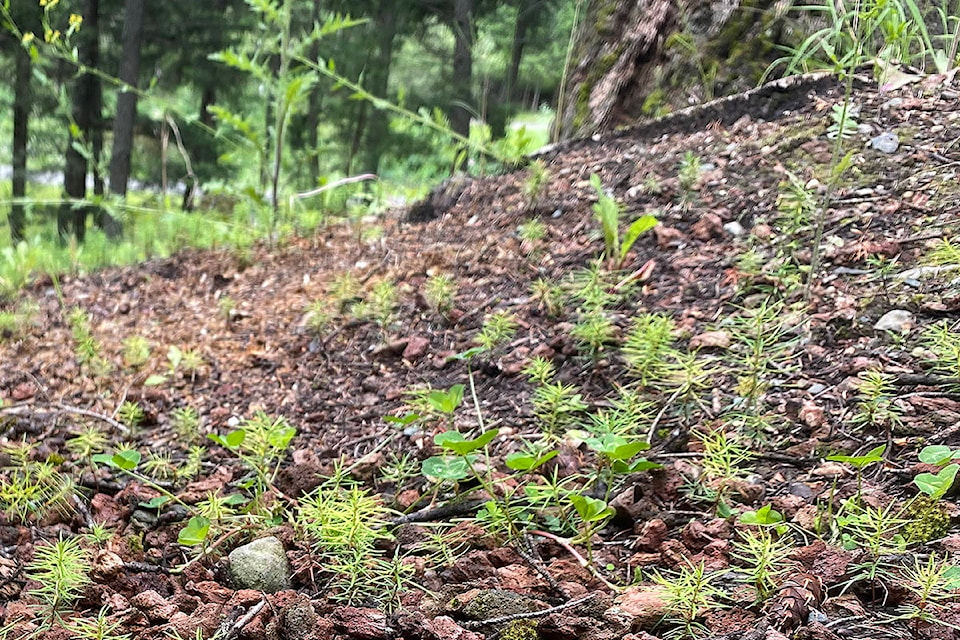Jim Hilton
Observer Contributor
Douglas fir forests continue to be attacked by fir bark beetles, defoliating insects, wildfires and a host of other calamities but have continued to show why fir trees have become well established on the coast and the Interior of B.C.
As suspected the massive cone crops for the past few years have resulted in a huge number of fir seedlings throughout the Interior Douglas fir landscape.
I was concerned that the lack of early snow and cold weather might have killed a lot of new seedlings but many have survived and are growing well with the help of the abundant rain this spring.
I was impressed by a couple of seedlings that managed to germinated in a small crack on my cement block sidewalk and can appreciate over time how they could damage many concrete structures as they slowly grow and put pressure on their surroundings.
The ability of fir forests to regenerate naturally allows foresters to use partial cutting (rather than clear cuts) as a management tool for this species.
With an adjacent seed source fir trees have demonstrated they can quickly establish on very disturbed areas.
As I was driving out west last week, I was again reminded how the north facing road cuts have been well-established by a vigorous fir stand which often has to be cut down so it will not interfere with the power lines often next to the roads.
As successful as the establishment is on the flat ground and shaded areas the south facing road cuts take much longer to establish a new forest. It usually takes few decades of grass and forb cover crops to provide some shade for the new seedlings to take hold.
The ability to create a vigorous understory if left unchecked by ground fires does lead to the potential fuel loading and which allows for destructive wild fires like those of 2017 -18.
It will be interesting to see the long term impacts of the spacing treatments and understory thinning of the areas treated for wildfire control purposes.
How often will they have to be treated and how well can controlled burns be used to maintain the density desired for wild fire control purposes.
It would also be interesting to see how domestic animal grazing could be used to manipulate the under stories and improve the future growth of the stand through use of legumes and nutrient cycling by animals.
It will be a challenge for forest managers to meet the many demands on the forests adjacent to the urban centers but it will also be exciting to see how managing these forests can be used for meeting the fibre needs for lumber and biomass industries as well as provide a wide variety of recreation uses of forests easily accessed by the urban populations.
We will all have to be accommodating of the many ways that the forests will be needed to treated so we can achieve a wide variety of uses. The many positive attributes of Douglas fir forests will allow us to achieve many of our goals if we show some resiliency, wisdom and restraint.
Jim Hilton is a professional agrologist and forester who has lived and worked in the Cariboo Chilcotin for the past 40 years. Now retired, Hilton still volunteers his skills with local community forests organizations.
READ MORE: FOREST INK: Most juniper shrub damage likely from voles
Do you have a comment about this story? email:
editor@wltribune.com
Like us on Facebook and follow us on Twitter.
